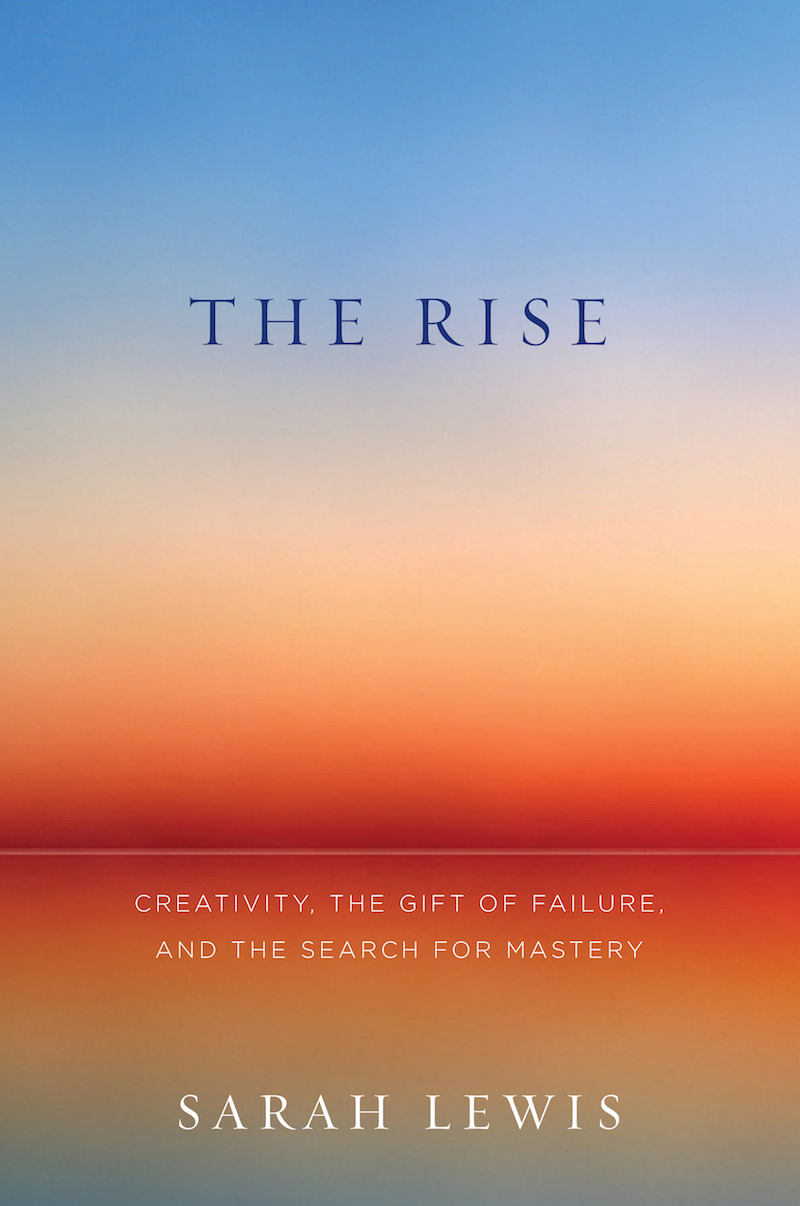In March, New York–based curator, art historian, and Yale MFA Critic Sarah Lewis will publish her anticipated first book, The Rise: Creativity, the Gift of Failure, and the Search for Mastery. For this inspiring work of creative nonfiction, Lewis spent nearly six years studying failure and interviewing people from all over the world and of varied professions—archers, dancers, visual artists, scientists, explorers, researchers, and entrepreneurs, among many others. Lewis has deftly woven together their poignant stories of humbling and life-altering experiences. In the following interview she discusses the origins of her interest in failure and why she prefers the term “mastery” to success.
________
Art21: The Rise started, in part, with your Harvard College application essay on failure. Did you know then that you would write this book?
Sarah Lewis: No, no. Over time, I became interested in how we become who we are. I would look at the life stories of different individuals and see that they’d found strength in an experience that most would rather avoid. I realized that I wouldn’t become who I needed to be unless I was able to martial that kind of strength myself.
Being in the arts, I was also questioning whether failure was applicable only to the creative process or to life in general. I could not have written the book without understanding the creative process, and without living out what the Latin origin of “curate” means: to care for. The creative process is actually how we fashion our lives and follow other pursuits. Failure is not something that might be helpful; it actually is the process.
Art21: You’ve covered such a wide range of people and stories, from an archery team to choreographers to scientists to artists. How did you select your subjects?
SL: To a certain degree, I approached the book in the way that I approach an exhibition. As a curator, I am always looking for what we’re failing to see and trying to put that in front of people. I curated the stories in the book hoping that people might know of [the American choreographer] Paul Taylor, [the British explorer] Ben Saunders, and [the Nobel Prize-winning physicists] Andre Geim and Konstantin Novoselov, but not so well that their stories would be completely expected. Writing The Rise was very much about getting to a place where I could be still enough to hear what I was being given to say, and also still enough to understand if the story was going to be right for the book or not.
Art21: Is it correct that a lot, if not most of your subjects are men?
SL: Not really. But people are more willing to talk about failure when it’s assumed that they would have been a success. For women, it’s very recently that we’ve been expected to be successful, so the idea that we would be open about our failures is a new phenomenon. The Rise has a few examples, and for me, the most powerful examples—the anonymous archers; Sarah Blakely, who founded Spanx; Jackie Joyner-Kersee, the athlete; Julie Moss, the Ironman triathlete; and Angela Duckworth, the researcher on grit—are the women’s stories. I write about myself as well.
Art21: When we talk about failure we often talk about success, too. You do a beautiful dance around this dichotomy, talking about failure as a space of experimentation, uncertainty, and play, where success is not the end goal. Instead, you write about mastery. Why did you decide to use this particular term?
SL: Success is a hollow word. It’s typically a designation that someone else gives you. An artist has some shows that are recognized by people and is therefore deemed successful. But internally what it takes to push forward is not simply an accolade but tenacity, which is far more connected to mastery than it is to achievement or success. Mastery is about striving to reach an internal goal that might take a lifetime. One of the reasons I went into the arts is because I find it a very noble and vital pursuit—to be here, on this planet, continuing to do something of meaning to your own life. Mastery requires an understanding of this constant, or what I call in the book “the ever-onward-almost of it.” A master doesn’t reach a certain point and then say, “Okay, I’m done. I’m going to move on to the next thing.” Masters are masters because they know their work is almost never done, and they know there’s always something more they can learn and understand. Masters are not only engaging with their contemporaries; they see the entire field of people who have come before them as contemporaries, too. They’re really trying to push forward in an epochal way.
Things move very fast in the culture we’ve created, and we don’t focus on mastery enough. Students want their acclaim very, very quickly. What is lost is the immersion and irreplaceable gifts that come from a soulful pursuit of one’s work. Mastery requires a level of sacrifice and a sense of real dedication to a craft, not just crafting a career. I think the reason why failure and success are not perfect opposites—it’s more accurate to say failure and mastery might be related—is because mastery is dynamic and success really isn’t. And failure is not a static position; it’s also an ongoing dynamic. I think success in the art world makes people happy but also nervous because once they’ve achieved it, they know that they have to keep doing something to keep the accolade. Whereas mastery is constant no matter what someone says about your work.
________
The Rise: Creativity, the Gift of Failure, and the Search for Mastery is available for pre-order on Amazon.





Pingback: Where Creativity Lurks | OccasionalPiece--Quilt!